By Walt Anderson
It is easy to get caught up inside on a digital device or running errands around town in our own vehicular bubbles. In our busy lives, we may not be able to head to the Buenos Aires National Wildlife Refuge on a whim, no matter how rewarding that trip would be. But sometimes the call of the wild overrides our sense of “responsibility” (really just service to our artificial environments). It becomes time to reconnect with nature, and usually we don’t have to go far to find peace and inspiration.
Recently I set aside my “to do” list and headed out to a forest of giant cottonwoods, a place unremarkable to most people, as it has no nature trail, no signs to direct you here. It’s a place where people pass by in the hundreds along a busy highway, but where you never run into a single person.
All I expected was the chance to explore slowly and seek beauty. It’s always there if you seek it. And in an hour of peaceful landscape interrogation, I found far more than I expected. It was truly magical.

Cottonwoods had recently released snowstorms of fluffy seeds, so the ground was soft and spongy. Sunlight filtered through the leafy canopy, and shadows on the ground shifted as the highest branches swayed. I came upon a cottonwood that had been flattened in a windstorm but had remained rooted. In time, it had directed its growth upward to the light, former branches becoming trunks in their own right.
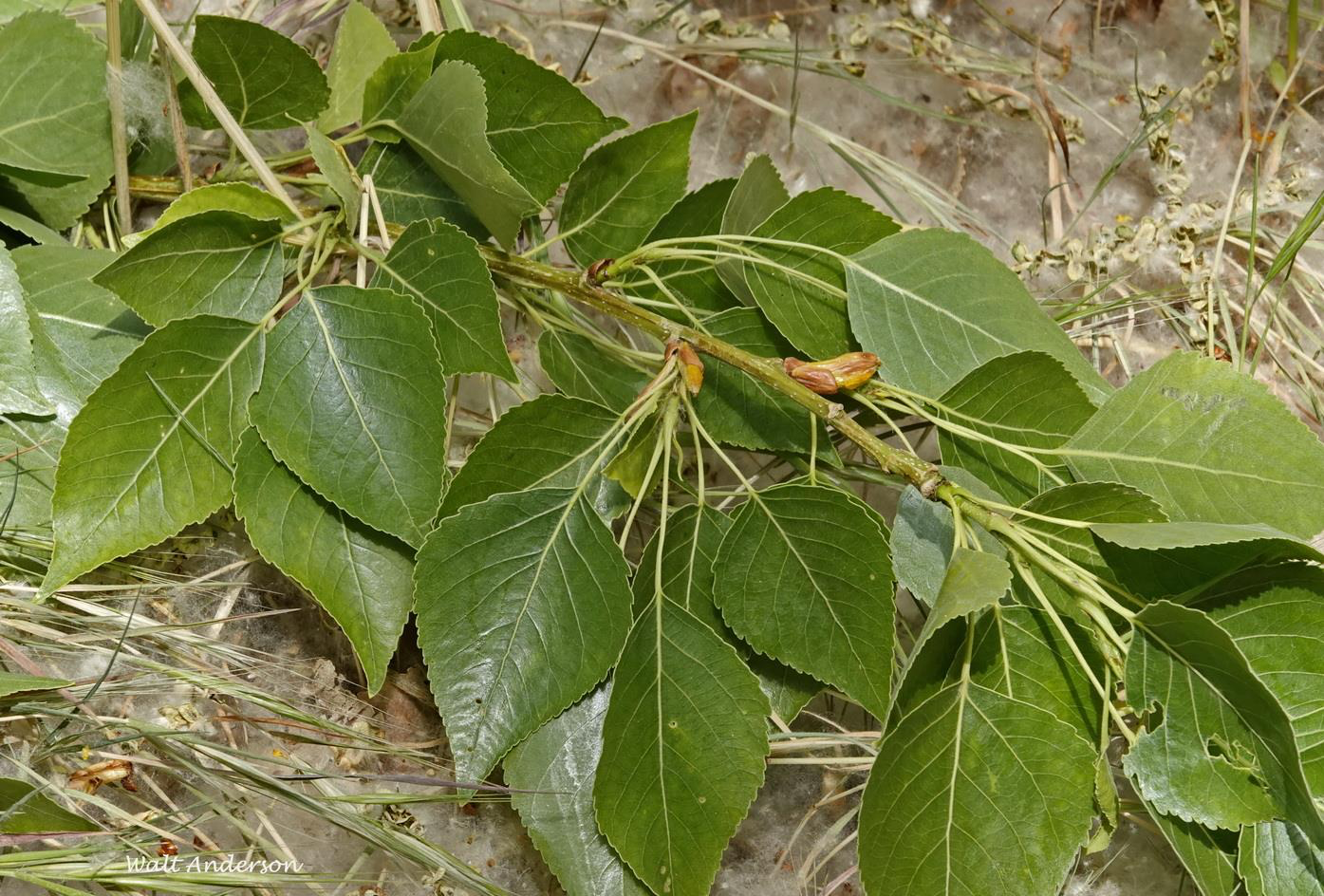
Wind had blown some of the green foliage to the ground, where it contrasted with the downy seeds. I was struck by the simple elegance of the leaves, a view I don’t get when I am beneath the canopy looking up.

A grove like this is ideal for roosting owls, and though there were many acres of trees to inspect, my searching paid off. Like animated tree bark, this Great Horned Owl relies on camouflage and stillness to avoid easy detection. Though owls usually hunt at night, if a careless pocket gopher were to pop up on the forest floor during the day, any hungry owl could gopher it.

Sharing this magical grove were colorful birds like brilliant red Summer Tanagers and more modest species like this Willow Flycatcher. I didn’t bother to inform it that it’s not on a willow.
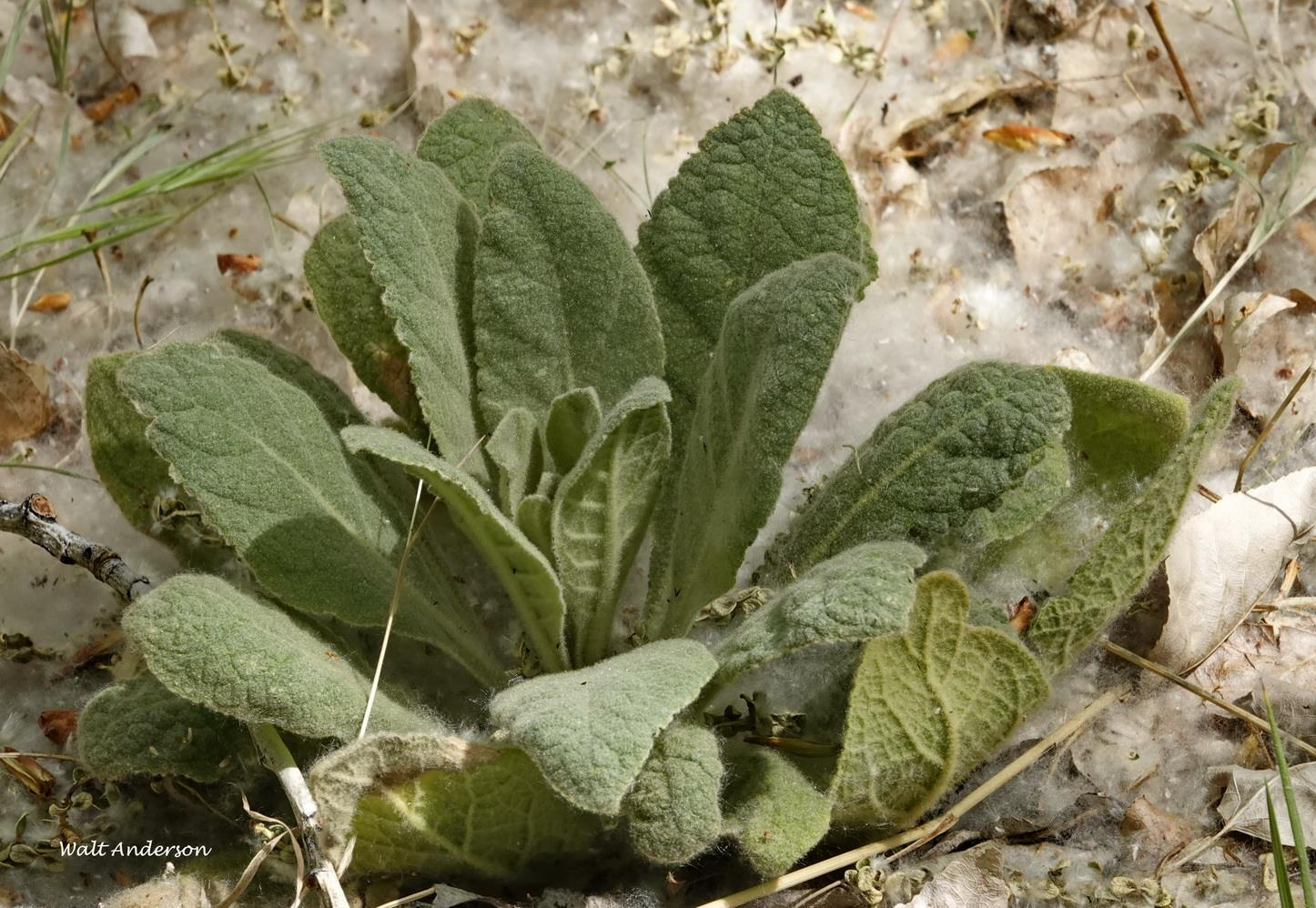
One of the field marks of a naturalist is perceptual flexibility—the ability to simultaneously see the big picture and still note the small details. My attention was drawn to the rosette of Woolly Mullein leaves amidst the dense cottonwood fluff.
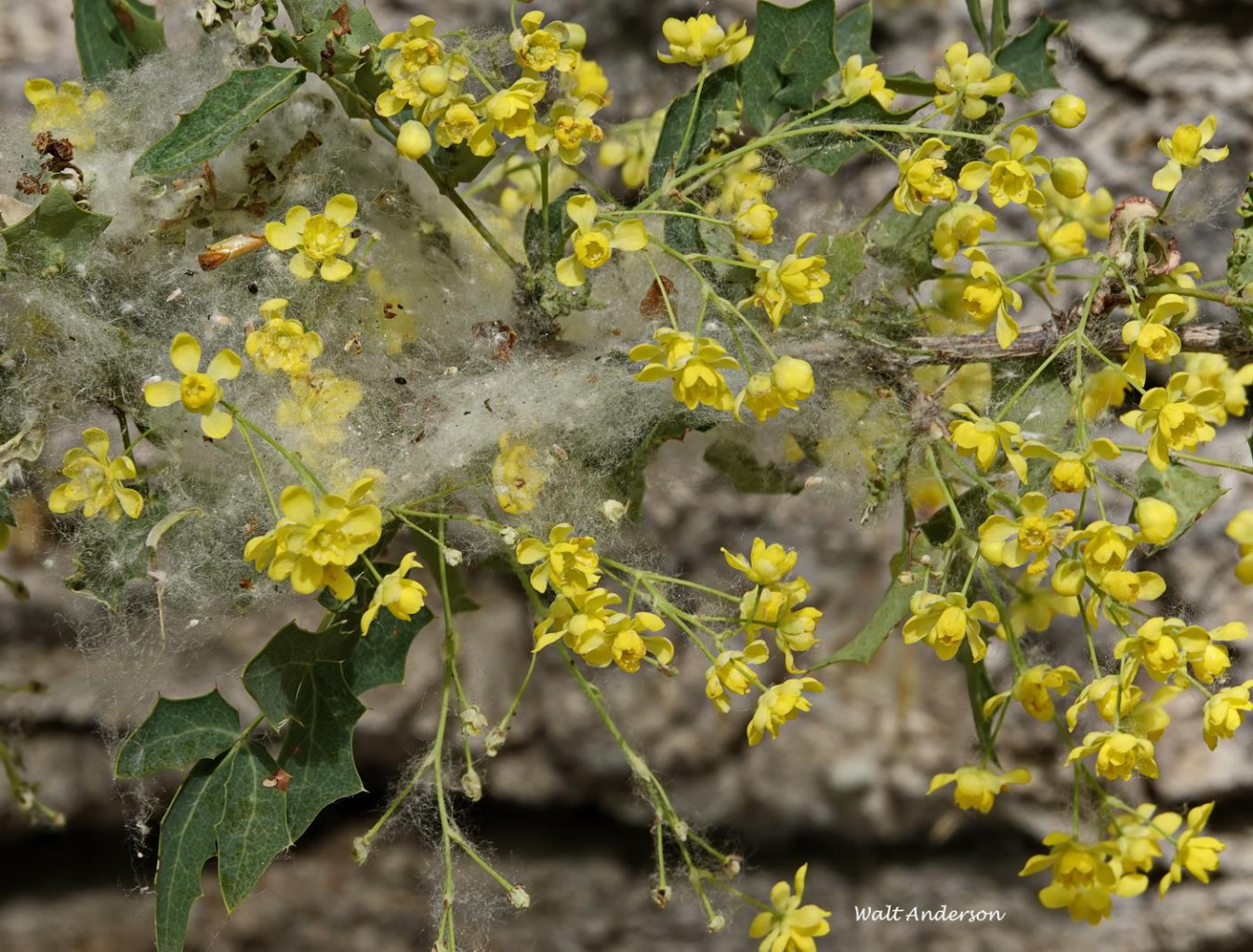
Some of the fluff was captured by the spiny leaves of a barberry in bloom.
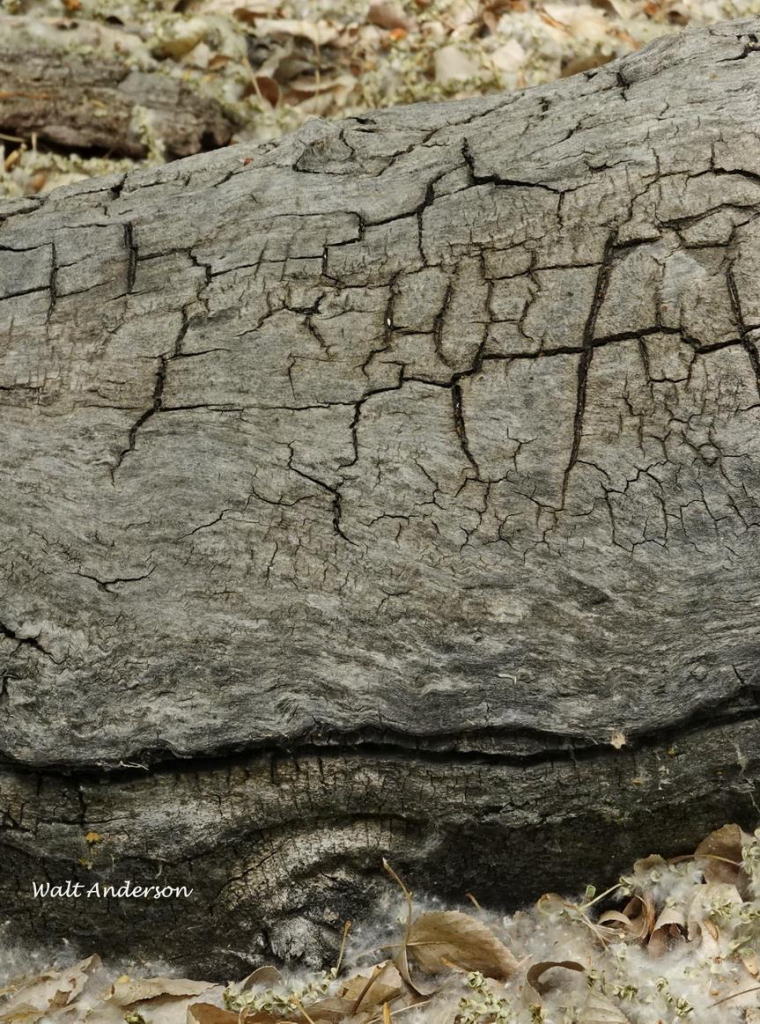
Always looking for appealing patterns, I focused on the hieroglyphics of a weathered cottonwood log. Then I heard the slightest sound of swishing grasses and carefully turned around.
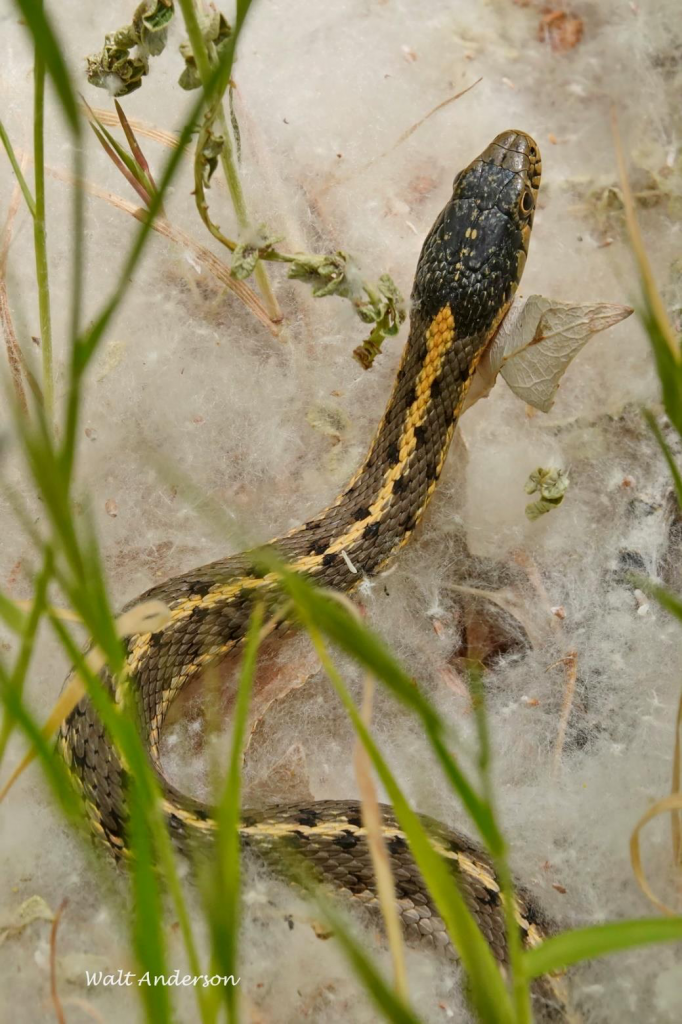
To my delight, I found a wary Wandering Gartersnake in the fluff. If I had been moving quickly, it would have been long gone, but because my movements were hardly faster than those of the tree trunks around me, it didn’t panic. I marveled at the intricate beauty of its scales.
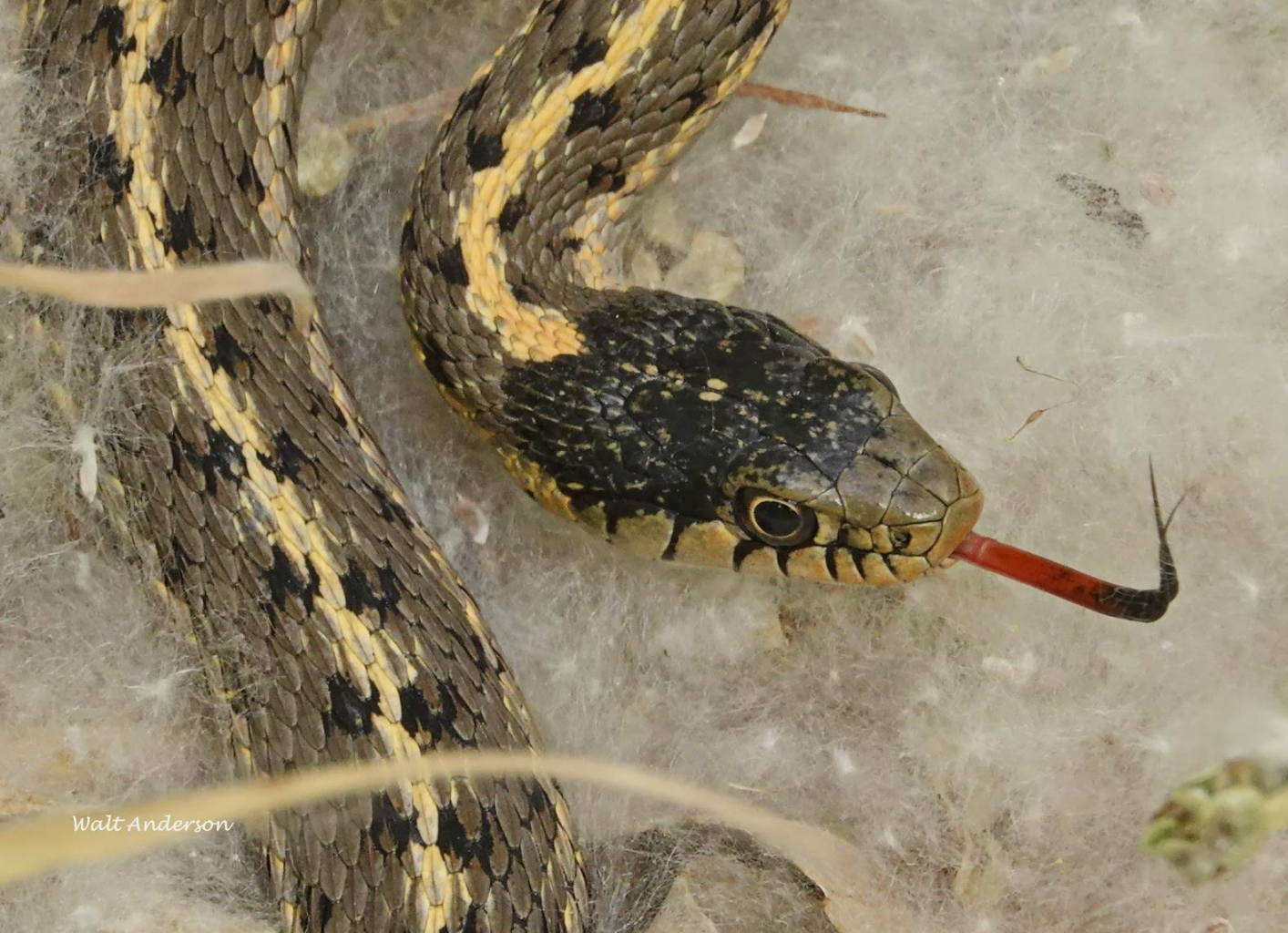
As I moved closer, the snake tested the air to try to sense me. I carefully moved away so that the snake was left in peace without being subjected to energy-consuming flight. It reminded me again to slow down, to respect the space of wildlife.
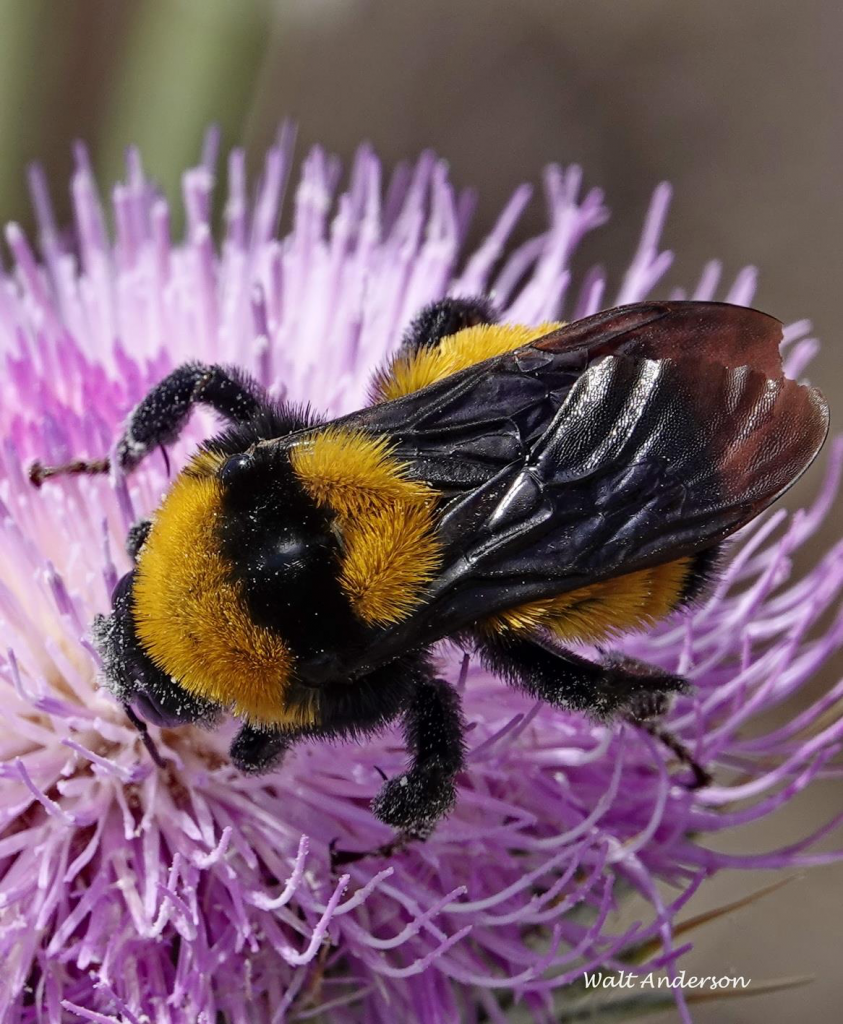
At the edge of the woodland in bright sunlight was another gorgeous creature, a fat bumblebee on a blooming thistle. By moving slowly and, most importantly, being attentive, I had found so many natural treasures in the space of an hour that all the stresses of the week had been washed away. And now, examining my photos, I am able to relive the joy and peace I felt during that short period of nature-recharge.

The therapeutic value of immersion in nature is well-known, but it requires us to be there, open and receptive, tuning out the incessant chatter of our minds and focusing on the beauty that is just waiting there for us to find it.
